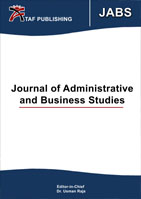
 What Determines Leverage in Selected Countries of Central and Eastern Europe in the Automotive Industry
Abstract
This article aims to analyze the financial structure of companies belonging to the second and third sectors. The issue of funding sources is one of the fundamental decisions of financial managers and has been a much-debated topic in the last century. A number of studies have been written throughout this period, but there is still no consensus, and there is still a need to expand this area with new knowledge for other countries and sectors. The analysis covers medium and large companies engaged in the automotive industry and is located in eleven selected countries, including the Visegrád Group, Austria, Bulgaria, Romania, Slovenia, Germany, Italy, and France. The period under review is between 2010 and 2018. The input data come from the Orbis and World Bank database. The research deals with the impact of profitability, liquidity, asset structure, non-debt tax shield, GDP, inflation, and basic interest rate on the total, long-term, and short-term debt of companies. Panel regression using the GMM method is used to determine the impact of individual factors on debt levels. The main conclusion of the research is that companies in both sectors are mainly affected by the determinants of the external environment, most of all by changes in interest rates. This research builds on existing knowledge and seeks to disseminate it by focusing on specific sectors. From a practical point of view, the results of the research could help companies from the researched sector to optimize their sources of financing with regard to the influence of external determinants, which proved to be more significant. |